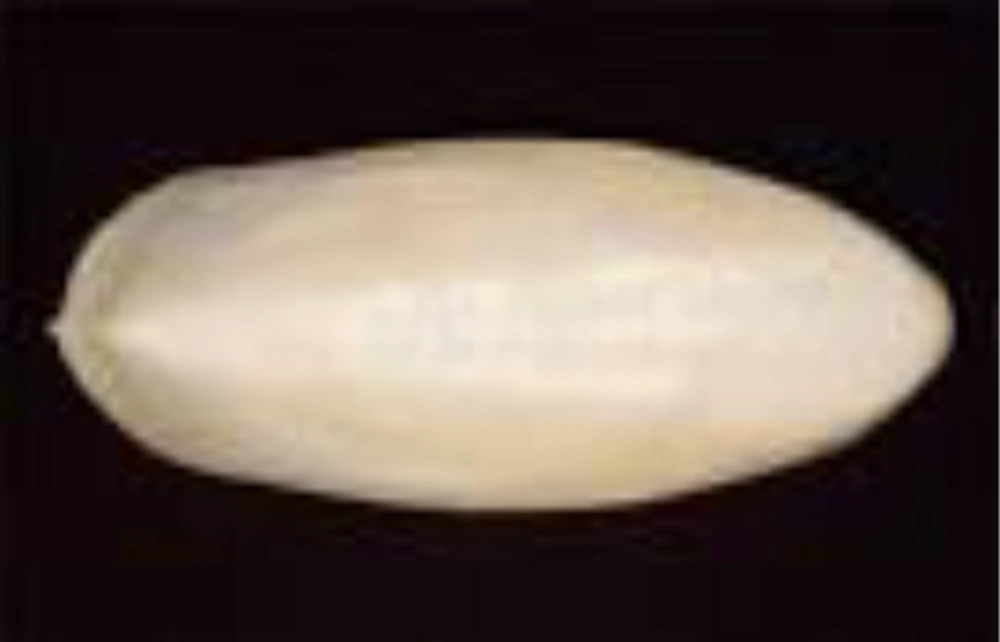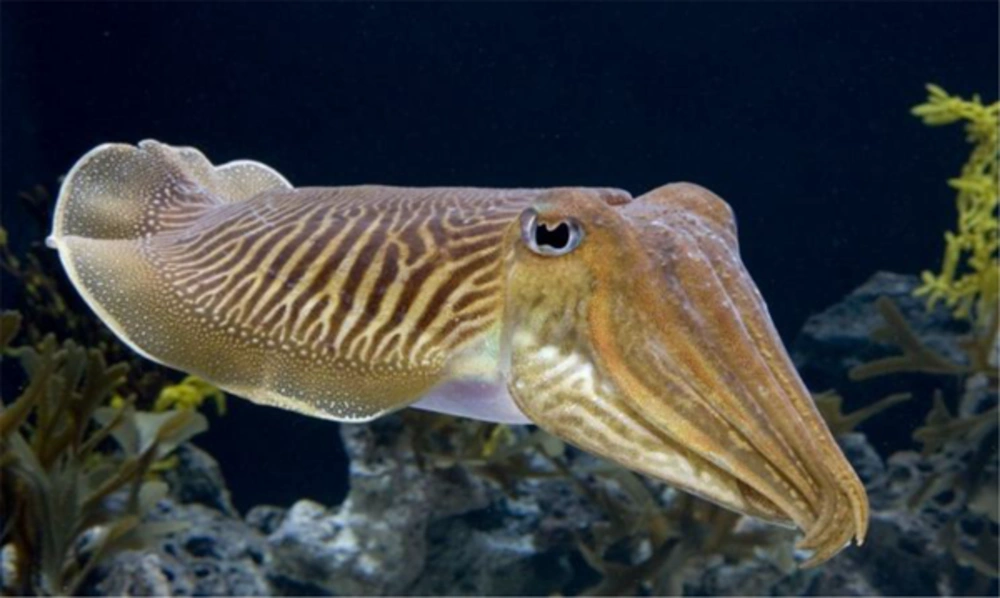The Persian Gulf is an important source of sea animals such as different types of fish (food and decorative), crabs, corals, sponges, shrimps, dolphins, turtles etc.
A main class of marine shellfish is Cephalopod. Cephalopods include cuttlefish, squid and octopus that are important marine resources since they are rich in polyunsaturated fatty acids (FA), particularly omega-3 FA and good sources of essential fatty acids that are not produced in the human body (1). The most common species of cuttlefish in the Persian Gulf are Sepia Pharaonis (2, 3). Cuttlefish have an internal structure called cuttlebone (CB). In the native dialect, they are called seabed (Figures 1 and 2). Cuttlebone is the hard bone tissue in the back of the cuttlefish with high porosity, oval shape and spongy form, which functions as a rigid buoyant tank in the animal; the framework of cuttlebone is an inorganic-organic composite. The organic fraction is composed of protein and β-chitin (1% - 2% by weight) that has effect on solid physical properties and control of crystal sizes (4). Inorganic fraction is composed of calcium carbonate and calcium phosphate (5). On the other hand, cuttlebone is a natural product, containing no toxins or contaminants.
Cuttlebone has many pharmaceutical properties. Cuttlebone powder is used for the treatment of bleeding and external infections. It is added to birdseed for adjusting the function of the liver and kidney and decreasing stomach acid. Improvements have been achieved by application of natural and marine compounds and catalysts (6) in synthetic bioactive compounds and chemical reactions (7).
However, nowadays, new researches have been done about the application of CB in chemical reactivity, which are classified in three groups:
1- In chemical reactions
Cuttlebone was used in condensation reactions, such as crossed-aldol condensation and benzoin condensation. As a base (pH ~ 8, in aqueous solution) it facilitates the elimination of α-hydrogen and formation of carbanion. For example in crossed-aldol condensation of acetone with benzaldehyde by calcinated CB/ NaNO3 with water-ethanol solvents and one hour reflux, yields of 75% have been obtained. In benzoin condensation, benzaldehyde with calcinated CB/NaNO3 and thiamine hydrochloride as a catalyst, water-ethanol solvents, two-hour in a water bath at 60°C was converted to the corresponding benzoin with the yield of 51%.
In alkali hydrolysis reaction of esters, calcinated CB/NaNO3, as a base instead of hydroxide ion, caused alkalinity of the medium and hence, facilitated hydrolysis of esters with good to excellent yield. For example methyl benzoate was hydrolyzed to benzoic acid in water-ethanol solvents with 94% yields under reflux conditions for 1.15 hour. Under these conditions, p-nitro methyl benzoate during 90 minutes with 95% yield, and methyl stearate in seven hours with 90% yield (saponification reaction) were converted to the salts of corresponding acids.
2- Removal of dyes from water and industrial waste water
Colored waste from various industries and discharge to the surface water is one of the most important environmental problems that have harmful effects for humans, sea animals and the environment. Alizarin Red S as an acidic dye and Malachite green as a basic dye were properly adsorbed on the raw powder of CB. The obtained optimal conditions for Alizarin Red S were pH = 2, initial concentration of 1 - 20 mg/L, amount of adsorbent of 500 mg, contact time of 10 minutes, and the temperature of 25°C. The achieved results showed the capability of endoskeleton powder of Sepia for adsorption of Alizarin Red S and Malachite green. The method was successfully applied for the removal of Alizarin Red S and Malachite green in real water samples.
3- Adsorption of toxic elements such as copper, lead and cadmium from aqueous solutions
Elimination of toxic heavy metals from water and wastewater is very important for the health of humans and the environment.
Cuttlebone powder as a low cost and nontoxic adsorbent was investigated for adsorption of toxic heavy metals. The optimal conditions for adsorption of Cr (III) were identified as pH of 5, initial concentration of chromium ions of 20 - 400 mg/L, and amount of damped adsorbent of 0.5 g. The maximum percentage of Cr (III) removal was found to be 98% (8).
The optimal conditions for Pb2+ removal were: pH = 5, initial concentration of metal ion of 20 mg/L, amount of adsorbent of 0.5 g and contact time of two minutes. The studied parameters for Cd removal were: pH of 7, initial concentration of cadmium ions of 5 mg/L, amount of adsorbent of 0.5 g and contact time of 20 minutes. The highest removal percentage for Pb, Cd and Cu ions were 100%, 94% and 98%, respectively. Thus, CB powder can be used in purification of water and wastewater resources from toxic heavy metals.
Of course, other new researches at the Research Center of Marine Pharmaceutical Science are being done on the use of CB in drugs and its pharmaceutical effects.

